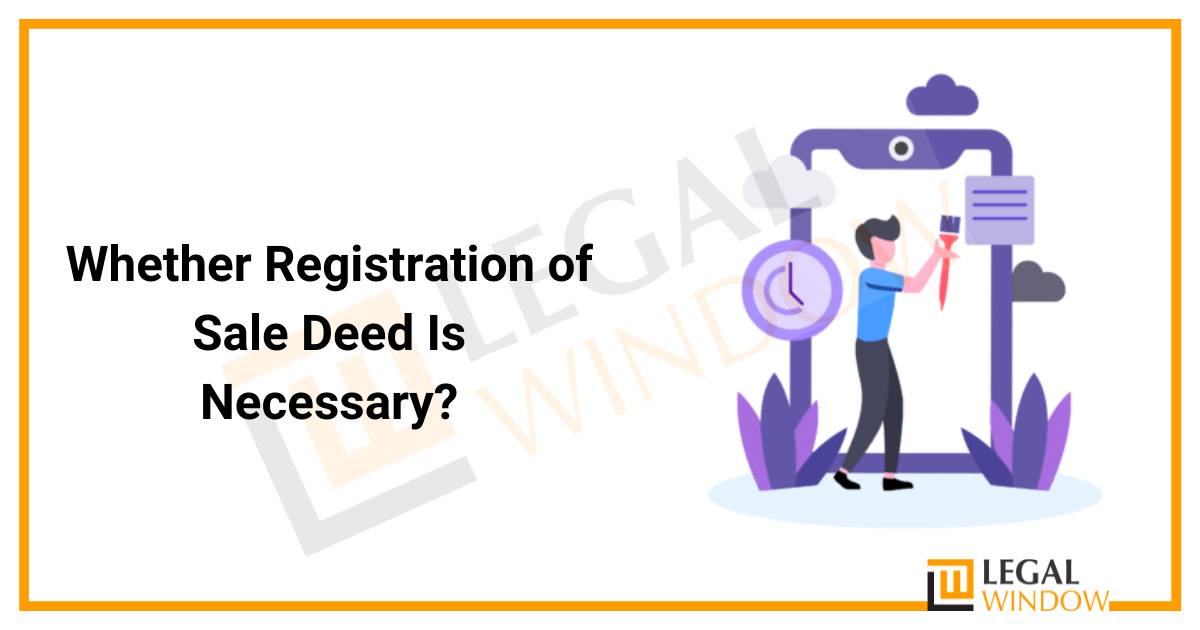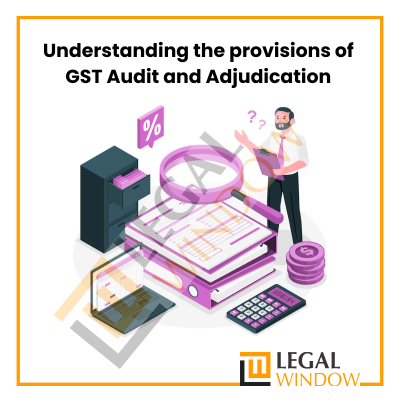
A sale deed is a legal instrument detailing a property sale between the parties. It is proof of ownership. Once the execution of the sale deed has been completed, the property’s ownership is transferred to the buyer. The buyer gets full control over the property and confers the title of ownership. However, the sale deed registration plays a very crucial role as it becomes legally binding upon the parties leaving no corner of ambiguity in case of any conflict. This article tells you all about the sale deed registration.
| Table of Contents- |
The object of Registration Act, 1908
The aim of the Registration Act, 1908 is to provide for the public registration of documents to provide individuals with information about legal rights and obligations arising from or affecting a particular estate. The law was enacted to provide for order, conduct, and public notice regarding transactions related to immovable property and protection from fraudulent entry of transfer documents. The act requires compulsory registration of certain types of documents and provides for the consequences for non-registering such documents. Each State may have different rules regarding registration, and there may be certain conditions especially in respect of the sale deed registration, in which both parties are involved in the sale.
What is a sale deed?
A sale deed is a legal instrument proving the transfer of ownership of the property to the other person or transferee. With this document, property rights and interests are acquired by the new owner. It depicts the actual transfer of the ownership by the transferor. The buyer must pay stamp duty and registration fee to issue a deed of sale. The sale agreement includes details about both the parties (buyer and seller), their age, addresses, and other relevant details.
It must be registered by the sub-registrar but prior to registering it should be paid with the full amount of consideration. Only a registered sale deed holds legal value in the eyes of the law. It also obligates the buyer and seller to comply with the terms and conditions agreed upon.
What is the process of a sale deed registration?
Step 1: PREPARATION
- You must pay the full amount of consideration as per the agreement before registration of the sale deed.
- There should be no debt owed to the property such as previous loans, property taxes, public payments, etc. If there are any outstanding arrears then the registrar may refuse to register the sale deed.
Step 2: STAMP DUTY CALCULATION
- Stamp duty is placed on a circle rate or an actual value depending on the maximum. Stamp duty can be between 3-10%.
- Stamp duty complies with the payment of 1% of the registration fee.
Step 3: PAYMENT OF STAMP DUTY
- It can be through e-stamping or non-judicial stamp paper.
Step 4: DRAFTING AND PRINTING OF SALE DEED
- The next step includes drafting of the sale deed that specifies the buyer, seller and payment details, sale terms, etc. The sale deed must be unconditional.
- Print the sale deed in case of e-stamp and attach the deed with it.
Step 5: REGISTRATION OF THE SALE DEED
- Take an appointment from the nearest sub-registrar office and a token number will be issued in which related information of date and time of appearance of the parties could be acquired. It can also be taken through the online websites only for those states which provide the e-stamping facilities.
- On the date of appointment, the buyer and seller must be present at the time of registration along with two witnesses each.
- Proper signature and fingerprint verification on documents are required.
Step 6: SALE DEED COLLECTION
- Collect a token slip after signing the deed of sale. The token slip is used for future reference purposes and while collecting the registered deed.
- An original copy of the registered deed of sale may be collected within 15-20 days after registration. If there is a loan, the bank will automatically collect the registered sale deed from the office of the sub-registrar.
Documents required for registration
- Passport-sized photographs of buyer and seller
- A duplicate copy of the sale deed which requires registration
- Identity Proofs (Aadhar Card, Voter’s ID)
- PAN Card of both the parties
- In case of a company- Certificate of Incorporation (certified and true copies)
- Municipal Tax bill copy to indicate the year of construction of the building
- Stamp paper or e stamp and receipt of the registration fee
- A copy of the property register card to show that the property does not belong to any Government control.
Position of the unregistered sale deed
Section 54 of the Transfer of Property Act, 1882, only authorizes the registration of a deed of sale but does not authorize the registration of the sale agreement or an agreement to sale (ATS). An unregistered deed of sale without delivery of property will not be sufficient as the document must be registered. So under Section 54 of Transfer of Property Act, 1882, that unregistered deed, although a valid document under the Registration Act, 1809, will not be able to confer the buyer a title. The delivery of the possession is considered part of the sale, a registered deed can be a surplus, and the delivery of the possession will be sufficient to give the title.
Requisites of S. 54 TPA, 1882
- At the time of the sale of immovable property, its value is Rs.100 or more, a deed of sale must be registered.
- If the amount is less than Rs. 100, this may be by registered title or by delivery of the possession because the purpose is to inform the public of the transaction.
Indemnity Clause
Compensation paid from one party to another in the event of a future loss is an indemnity. The clause of restitution in a sale deed governs that all information provided to the seller by the buyer is true and his or her ownership over the property is unlimited. Here the seller promises to pay the buyer any damages in the event of a dispute over ownership, resulting in a loss of money to the buyer. This clause is usually included during the purchase of a property as it poses a significant risk.
Points to extract
- The registered sale deed must be as per the Registration Act, 1908. Both parties (seller and purchaser) must be present physically and two witnesses of each with all required documents in the office sub-registrar to sign the deed of sale.
- The original documents must be presented within four months from the date of sale deed registration.
- The purchaser has to pay the stamp duty and registration charges of the sale deed.
- The seller needs to remove all property-related fees such as property taxes, water, and electricity costs before signing the sale deed.
Final words
A deed of sale is enforced after the execution of the sale agreement and after complying with all the terms and conditions set out in the sale agreement as agreed upon between the buyer and the seller. The buyer must obtain a title deed or obtain an Encumbrance Certificate to verify the title of the seller’s documents before the sale deed registration. It is not recommended to hurry while signing a sale deed. Clarify everything in detail as once the legal document has been signed, there is no alternative but to accept the words of the instrument as a final decision in the event of a dispute arising.
Neelansh Gupta is a dedicated Lawyer and professional having flair for reading & writing to keep himself updated with the latest economical developments. In a short span of 2 years as a professional he has worked on projects related to Drafting, IPR & Corporate laws which have given him diversity in work and a chance to blend his subject knowledge with its real time implementation, thus enhancing his skills.
Categories
- Agreement Drafting (23)
- Annual Compliance (11)
- Change in Business (36)
- Company Law (148)
- Compliance (89)
- Digital Banking (3)
- Drug License (3)
- FEMA (17)
- Finance Company (42)
- Foreign Taxation (6)
- FSSAI License/Registration (14)
- GST (118)
- Hallmark Registration (1)
- Income Tax (199)
- Latest News (34)
- Miscellaneous (164)
- NBFC Registration (8)
- NGO (14)
- SEBI Registration (6)
- Section 8 Company (7)
- Start and manage a business (20)
- Startup/ Registration (126)
- Trademark Registration/IPR (40)
Recent Posts
- Detailed Analysis of Section 179 of the Companies Act, 2013 April 24, 2024
- Maximise Your Tax Savings: Power of Form 12BB April 23, 2024
- Cryptocurrency startups and Regulatory compliance April 22, 2024
About us
LegalWindow.in is a professional technology driven platform of multidisciplined experts like CA/CS/Lawyers spanning with an aim to provide concrete solution to individuals, start-ups and other business organisation by maximising their growth at an affordable cost.








